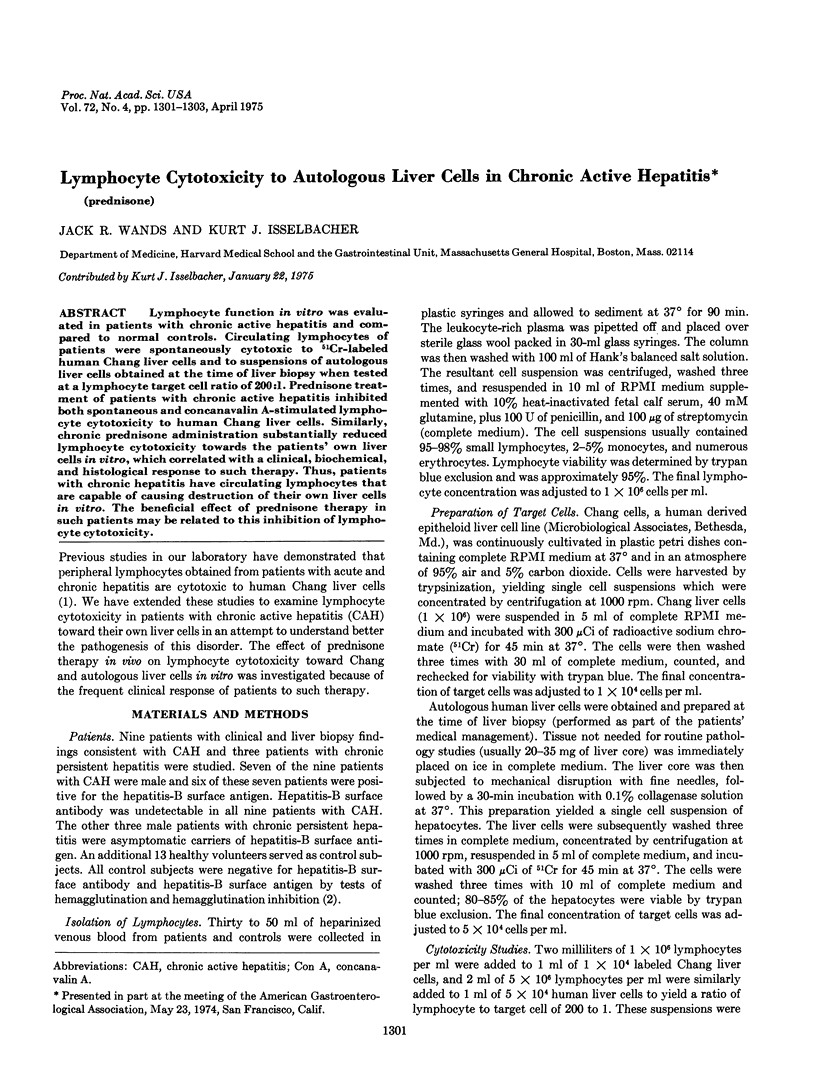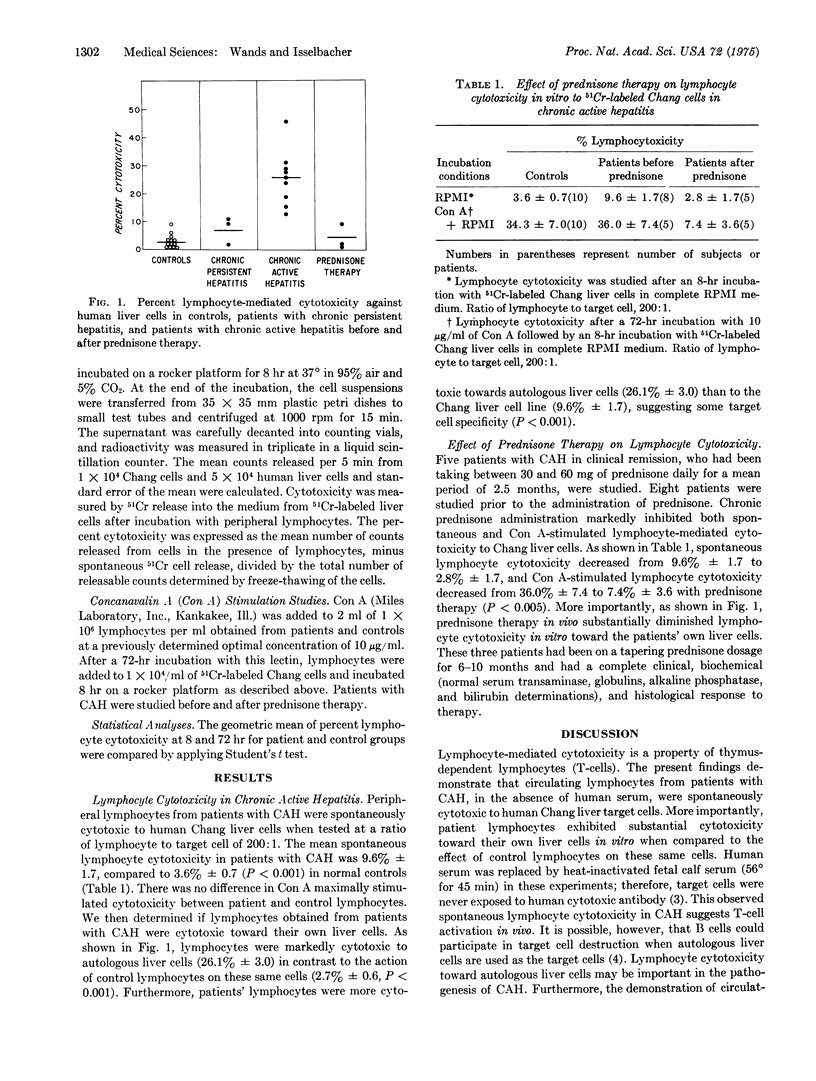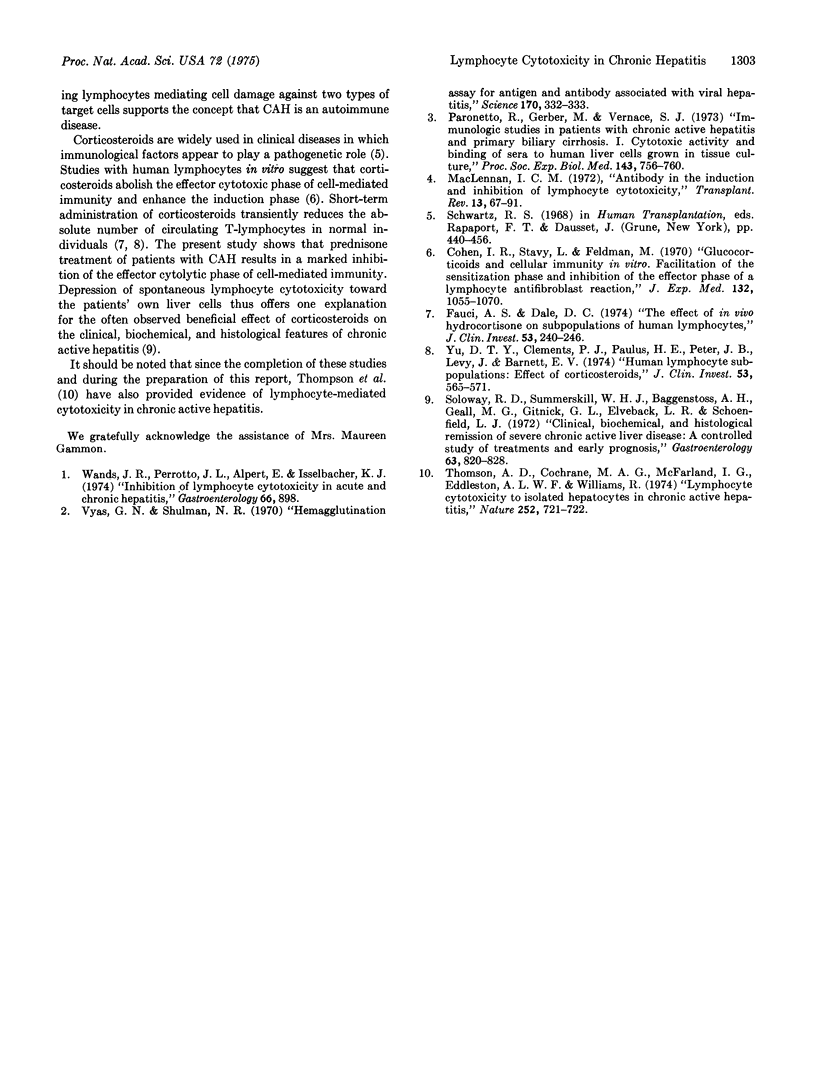Abstract
Lymphocyte function in vitro was evaluated in patients with chronic active hepatitis and compared to normal controls. Circulating lymphocytes of patients were spontaneously cytotoxic to 51Cr-labeled human Chang liver cells and to suspensions of autologous liver cells obtained at the time of liver biopsy when tested at a lymphocyte target cell ratio of 200:1. Prednisone treatment of patients with chronic active hepatitis inhibited both spontaneous and concanavalin A-stimulated lymphocyte cytotoxicity to human Chang liver cells. Similarly, chronic prednisone administration substantially reduced lymphocyte cytotoxicity towards the patients' own liver cells in vitro, which correlated with a clinical, biochemical, and histological response to such therapy. Thus, patients with chronic hepatitis have circulating lymphocytes that are capable of causing destruction of their own liver cells in vitro. The beneficial effect of prednisone therapy in such patients may be related to this inhibition of lymphocyte cytotoxicity.
Full text
PDF


Selected References
These references are in PubMed. This may not be the complete list of references from this article.
- Cohen I. R., Stavy L., Feldman M. Glucocorticoids and cellular immunity in vitro. Facilitation of the sensitization phase and inhibition of the effector phase of a lymphocyte anti-fibroblast reaction. J Exp Med. 1970 Dec 1;132(6):1055–1070. doi: 10.1084/jem.132.6.1055. [DOI] [PMC free article] [PubMed] [Google Scholar]
- Fauci A. S., Dale D. C. The effect of in vivo hydrocortisone on subpopulations of human lymphocytes. J Clin Invest. 1974 Jan;53(1):240–246. doi: 10.1172/JCI107544. [DOI] [PMC free article] [PubMed] [Google Scholar]
- Paronetto F., Gerber M., Vernace S. J. Immunologic studies in patients with chronic active hepatitis and primary biliary cirrhosis. I. Cytotoxic activity and binding of sera to human liver cells grown in tissue culture. Proc Soc Exp Biol Med. 1973 Jul;143(3):756–760. doi: 10.3181/00379727-143-37407. [DOI] [PubMed] [Google Scholar]
- Soloway R. D., Summerskill W. H., Baggenstoss A. H., Geall M. G., Gitnićk G. L., Elveback I. R., Schoenfield L. J. Clinical, biochemical, and histological remission of severe chronic active liver disease: a controlled study of treatments and early prognosis. Gastroenterology. 1972 Nov;63(5):820–833. [PubMed] [Google Scholar]
- Thomson A. D., Cochrane M. A., McFarlane I. G., Eddleston A. L., Williams R. Lymphocyte cytotoxicity to isolated hepatocytes in chronic active hepatitis. Nature. 1974 Dec 20;252(5485):721–722. doi: 10.1038/252721a0. [DOI] [PubMed] [Google Scholar]
- Vyas G. N., Shulman N. R. Hemagglutination assay for antigen and antibody associated with viral hepatitis. Science. 1970 Oct 16;170(3955):332–333. doi: 10.1126/science.170.3955.332. [DOI] [PubMed] [Google Scholar]
- Yu D. T., Clements P. J., Paulus H. E., Peter J. B., Levy J., Barnett E. V. Human lymphocyte subpopulations. Effect of corticosteroids. J Clin Invest. 1974 Feb;53(2):565–571. doi: 10.1172/JCI107591. [DOI] [PMC free article] [PubMed] [Google Scholar]


